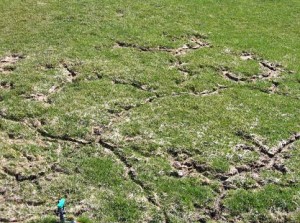Vole Problems, Vole Damage & Health Concerns
Voles are commonly known as meadow or field mice, and belong to the rodent family. Accumulated vole damage is apparent when populations are high. Vole damage includes girdling and gnawing of trees, vegetable gardens destroyed by eating of highly nutritious roots, damage to lawns by extensive tunnel and runway systems, along with tearing up mulch in flowerbeds. There are some health concerns with voles. Voles are occasional carriers of tularemia, bubonic plague, and are hosts to numerous internal and external parasites, yet voles pose no major threat because of their infrequent contact with humans.
How to Identify Voles & Vole Habitats
Voles occupy areas with heavy ground cover, grasses, grass-like plants or litter. Man-made dwellings such as orchards, cultivated fields and windbreaks are favored. The vole is a compact rodent with a stocky body, short legs, and a short tail. They are brown or gray in color, but many color variations exist. Voles are mouse-like in appearance (6″ to 8″ in length) with dense fur, and their tail is less than 3″ long.
Voles are rarely ever seen because they live primarily in tunnels and runways under the lawn surface. They construct numerous surface or subsurface burrows and tunnels (1″ to 2″ wide) in a relatively small area, which contain numerous adults and young. Voles are primarily herbivores and forage on grasses, flowers, vegetables, fruits, bulbs and roots (on occasion they will eat insects and snails). During the winter months voles do not hibernate, but instead make tunnels beneath the snow, in which they gnaw on shrubs and tree bark for nutrition. Voles are an important part of the ecosystem. Predators such as coyotes, skunks, fox, snakes, hawks and owls, all use voles as an essential component of their diet.
What Vole Damage Looks Like

